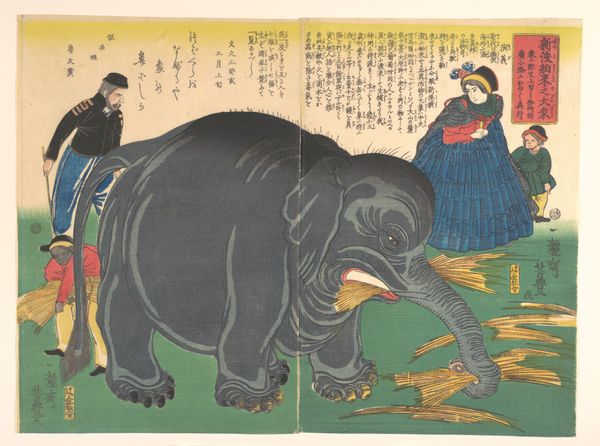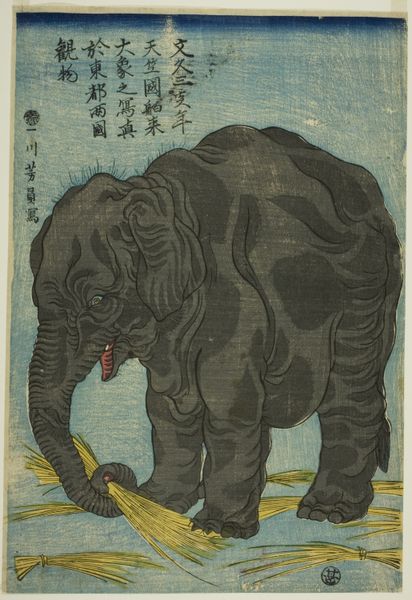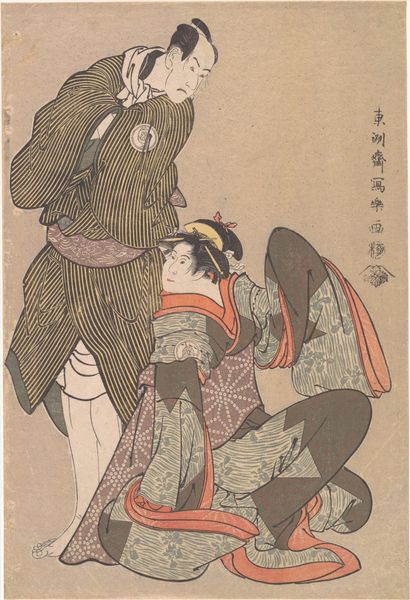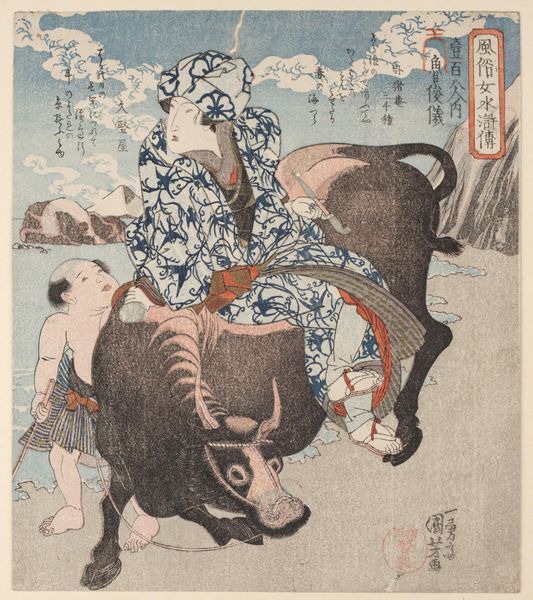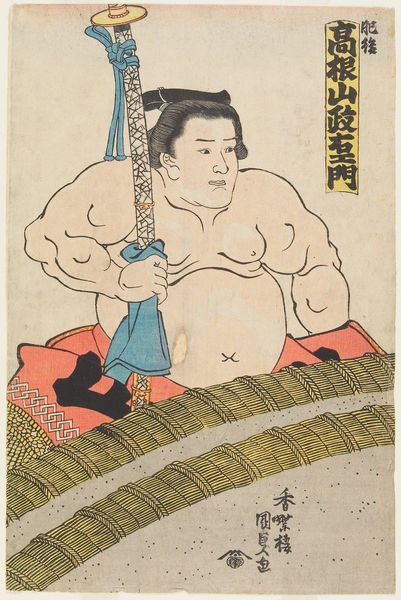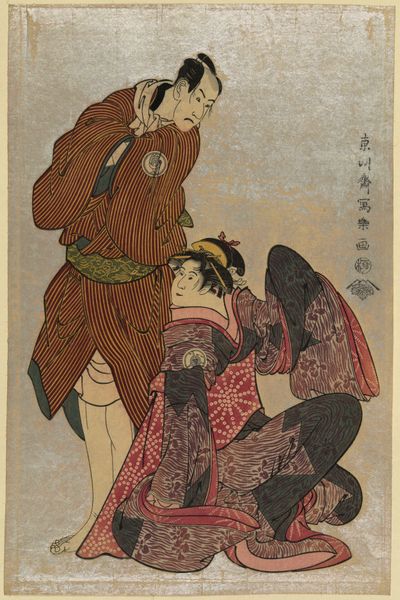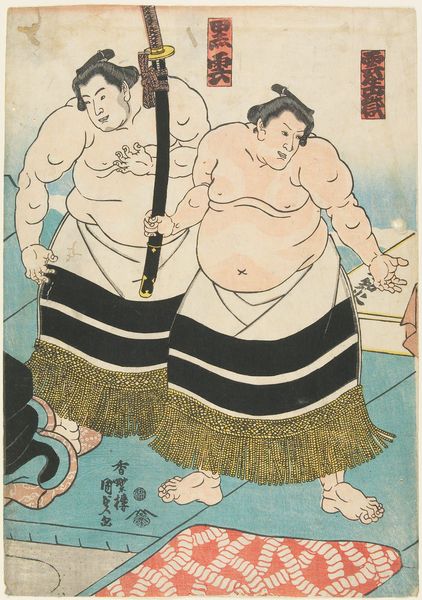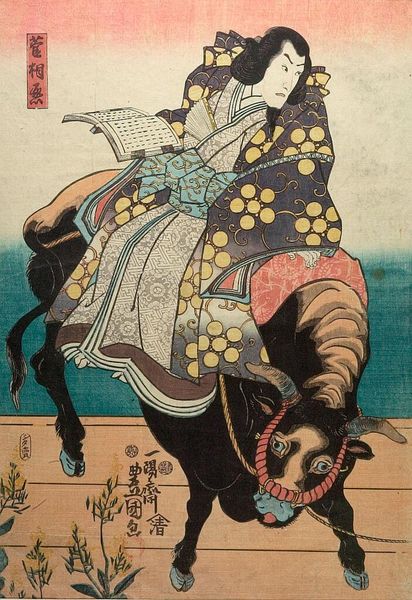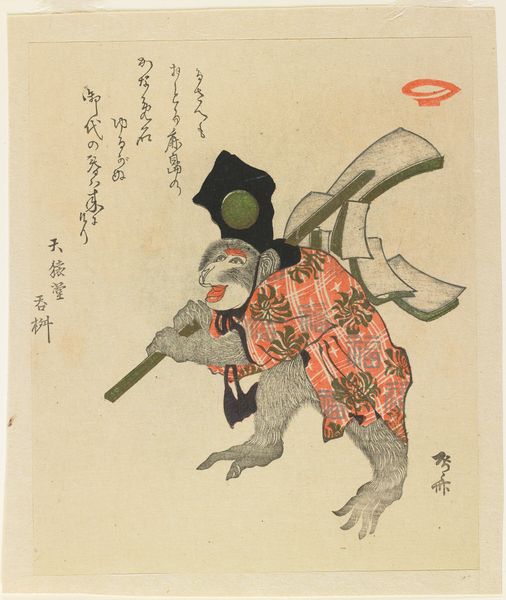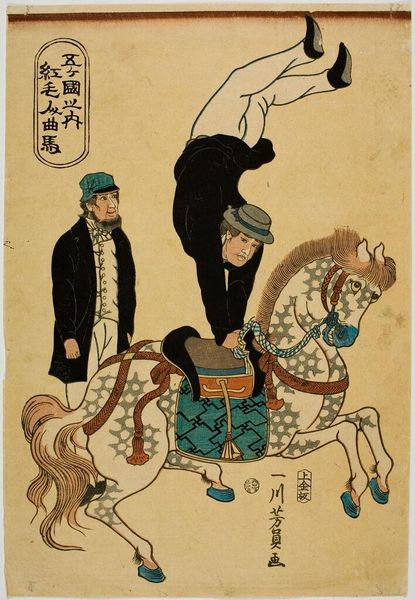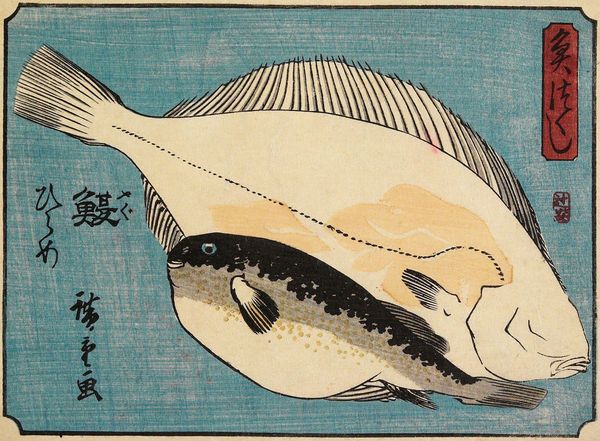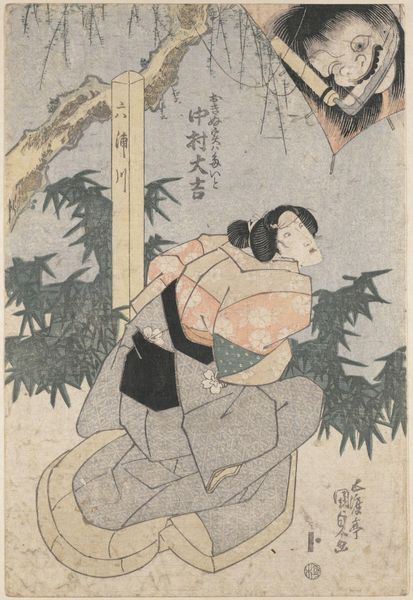
print, woodblock-print
#
narrative-art
# print
#
impressionism
#
asian-art
#
ukiyo-e
#
figuration
#
coloured pencil
#
woodblock-print
#
genre-painting
Dimensions: 14 1/2 x 9 7/8 in. (36.8 x 25.1 cm)
Copyright: Public Domain
Curator: Here we have a woodblock print, simply titled "Print," created sometime between 1853 and 1873 by Ichiryūsai Yoshitoyo. It's currently held at the Metropolitan Museum of Art. What’s your immediate reaction? Editor: Wow, the sheer unexpectedness of an elephant having a bath! There’s something inherently playful and slightly absurd about it. It's beautifully rendered, but that giant animal, juxtaposed with what seems like a mundane domestic scene...it’s a bit of a surreal visual poem. Curator: Precisely! This reflects the fascination with exoticism during that era. In Ukiyo-e, this sort of genre painting blended observation with imagination. Notice the men attending to the elephant. How do they play into this narrative? Editor: There's a careful respect or even deference shown in the figures’ stances toward this huge elephant, almost as though they’re coaxing a slightly grumpy god. The water, playfully sprayed by the elephant's trunk, adds a touch of irreverence, undermining the seriousness and inviting us to smile. Curator: Look at the writing and box in the right-hand corner and it speaks directly to this, translating to “An Indian Elephant at a Show in the Streets of Japan”. The people of this period probably didn't regularly see such creatures and exotic animal displays like this one became a commercial phenomenon. Editor: It brings up ideas around cultural exchange, perhaps a bit of tension, too, reflecting curiosity mixed with potential misunderstandings between cultures. It is after all filtered through the lens and style of Japanese impressionism of that time! Curator: Absolutely. Consider the psychology of encountering something utterly foreign. How might the symbolic weight of the elephant change as it is recontextualized within a Japanese narrative? It would hold different connotations and meaning compared to, for instance, Indian iconography, wouldn't it? Editor: You're right. I had viewed it in a simplified form and thought that what had truly sparked my fascination about this particular piece has now gone even deeper. Now seeing all of that cultural memory come alive... wow. Curator: It is in these juxtapositions, cultural memory, exotic imagery and psychological curiosities where so many layers exist beyond that initial splash of an elephant.
Comments
No comments
Be the first to comment and join the conversation on the ultimate creative platform.
